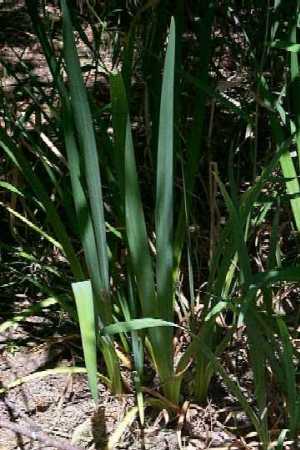
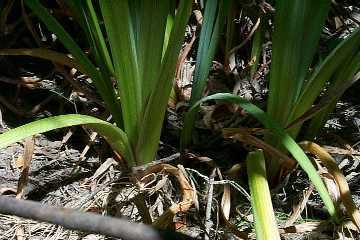
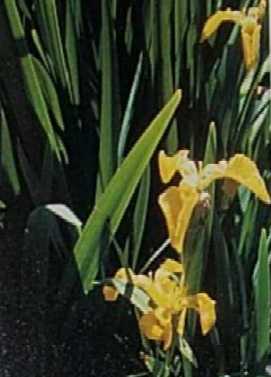
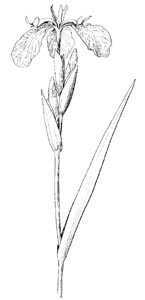
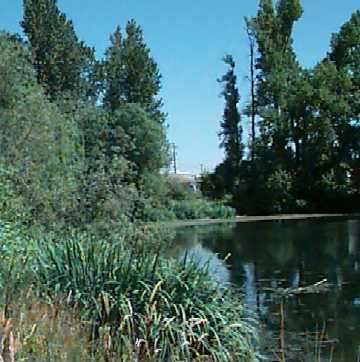
General Species Description.
- Yellow iris is a non-native perennial that is common in dense, robust stands along freshwater shorelines. This is the only yellow iris in our region. It is often one meter tall with thick rhizomes.
Leaves
- Leaves are pointed at the tip, often blue-green, with the central leaves being the longest. The leaves are 20-30 millimeters broad, stiff flattened edgewise, enfolding each other at the base, and the leaf sheaths are flattened.
Inflorescence/Flowers
- The flowers are yellow, showy, three-parted and sometimes have fine purple markings. The blooms can appear over an extended period, often from April to August.
Habitat
- The yellow iris is limited to areas with permanent shallow water, generally at depths of less then 0.5 meters. It is often found along the shores of streams and ponds, and in roadside ditches and swales. If is often found growing with common cattail (Typha latifolia), rushes (Juncus species), and sedges (Carex species).
Range
- Yellow iris was introduced from Europe and has become a well established and invasive species in the Pacific Northwest. It is found from Vancouver Island south into Washington, on both sides of the Cascades.
Similar Species
- When not in flower, the emergent vegetation of yellow iris can be confused with that of common cattail (Typha latifilia). However, cattail leaves have a round sheath, are longer (up to 3 meters long) and narrower (10-20 millimeters wide), and have leaf tips that are more pointed than those of iris.
Ecological Value
- As a result of its strong, thick rhizomes, yellow iris is a valuable species for sediment retention, shoreline stabilization, water quality enhancement, and wildlife refuge. Its flowers attract insects and birds. It is sometimes invasive.
Human Value
- This is an obligate wetland species which is not often found as an ornamental. Its showy flowers are an attractive addition to the shoreline habitat.
References
- Cooke, S. S., ed. 1997. A Field Guide to the Common Wetland Plants of Western Washington & Northwest Oregon.
Seattle Audubon Society and Washington Native Plant Society. Seattle Audubon Society, Seattle WA, 130 p.
Hitchcock, C. L. and A. Cronquist. 1973. Flora of the Pacific Northwest. University of Washington Press, Seattle WA, 697 p.
This page was created by: Marshall Johnson, August 7, 2000
Return to Northwest Oregon Wetland Plants Project